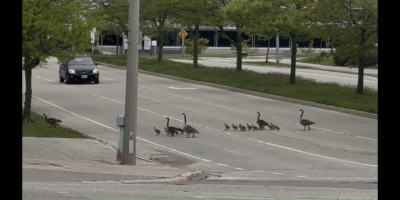Alas, if only all aspects of chemistry’s history were sunshine and daisies. This issue, we shall delve into some of chemistry’s darkest applications, and their resulting impact on the world’s history as we know it.
Chemical warfare, like nuclear and biological warfare, is considered a subset of non-conventional warfare techniques that utilize weapons of mass destruction, or WMDs. However, herbicidal warfare is the exception to the rule— while it is not considered an WMD, it has been forbidden from use since the 1970s by the Environmental Modification Convention, due to its negative effects on the planet.
Agent Orange is one such method of herbicidal warfare. It is a mixture of two herbicides: 2,4,5-trichlorophenoxyacetic acid (2,4,5-T) and 2,4-dichlorophenoxyacetic acid (2,4-D), the former of which has been banned from use within the United States, and whose use to this day its use closely monitored. This particular chemical was most infamous for it’s use in The Vietnam War, in what was known as Operation Ranch Hand by the U.S. Air Force. The goal of the operation was to ruin as much of the forested and rural land as possible in order to deprive the Vietnamese guerrilla fighters of resources such as food, shelter, and cover for their attacks.
It is suggested that over 6500 spraying missions took place over the course of Operation Ranch Hand, resulting in the destruction of approximately 10 million hectare of agricultural land. Reforestation of these areas was incredibly difficult due to soil erosion from the lack of tree coverage preventing any reseeding. Animal diversity suffered tremendously, and even to this day dioxins have been shown to persist within the native species, bioaccumulating within the food chain.
The effect on the population was no less severe. Over 4 million Vietnamese people were exposed to the chemical, with a quarter of those exposed either disabled or having reported health issues from the exposure. The chemical is a known carcinogen, and from a sociopolitical perspective, those living in rural areas were forced to move into cities, resulting in a three-fold increase in the urban population. This rapid urbanization lead to the formation of many slums in urban centres.
Further complications arose when it was revealed that some of the 2,3,5-T was contaminated with 2,3,7,8-tetrachlorodibenzodioxin (TCDD), one of the most toxic dioxins and known carcinogens, explaining many of the health affects caused that were not typically associated with exposure to Agent Orange. TCDD interacts with binding sites, affecting a transcription factor that moderates the expression of genes and genetic information. While it is classified as group 1 carcinogen, it primarily functions as a promoter of cancer caused by other compounds, not a mutagen itself. Even more terrifying is that this compound, like other dioxins, persists for incredibly long times on a variety of environments— it was a half life of approximately 7 years in human fat tissues.
It is not known whether or not the contamination of the herbicide with the dioxin was known about before Operation Ranch Hand was carried out. While it is repeatedly claimed that the contamination was only discovered afterwards, numerous reports of odd health cases and accidents during the production of the chemical even in Europe have been brought to attention, suggesting potential negligence or dishonesty on the part of those involved in the operation.




Leave a Reply